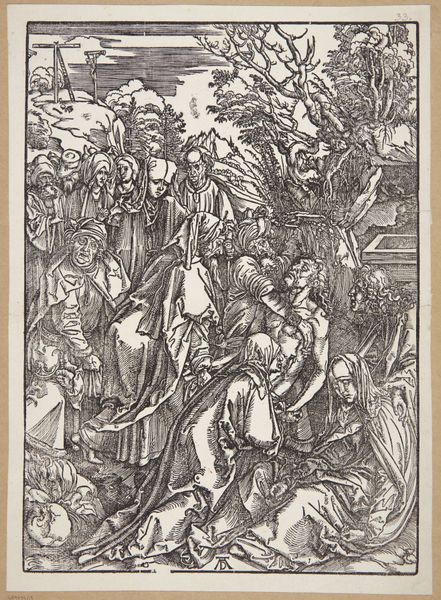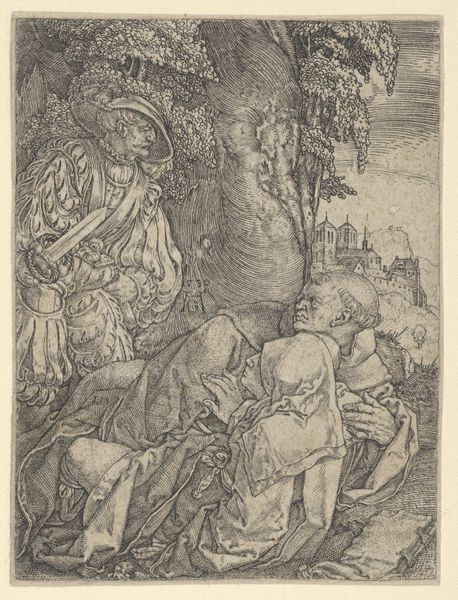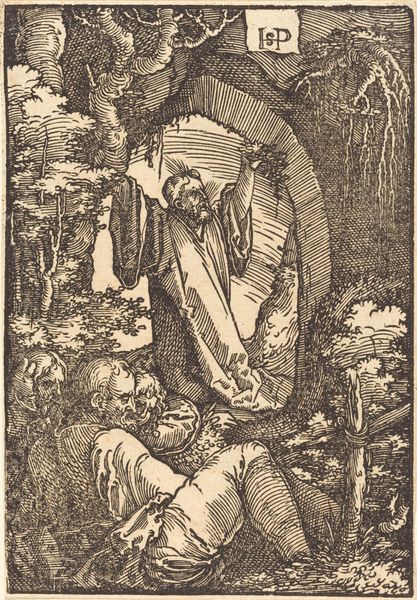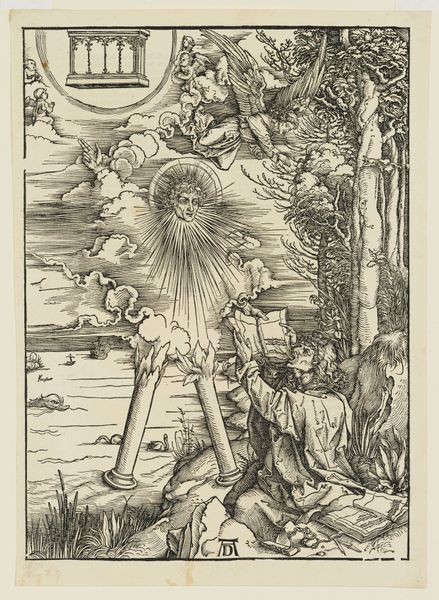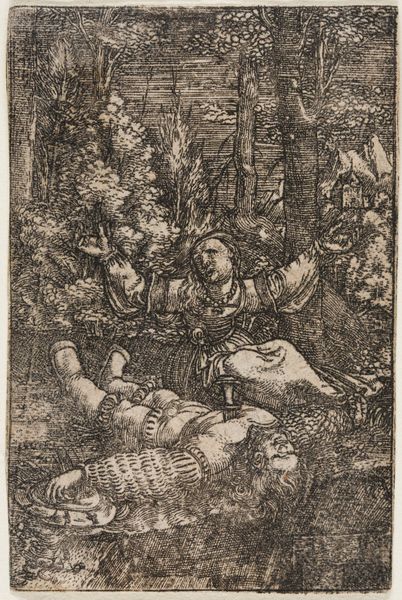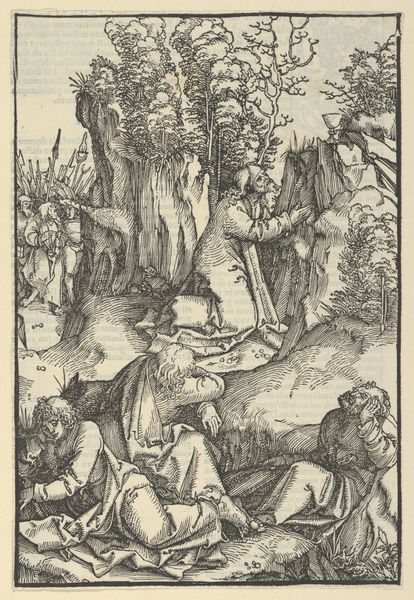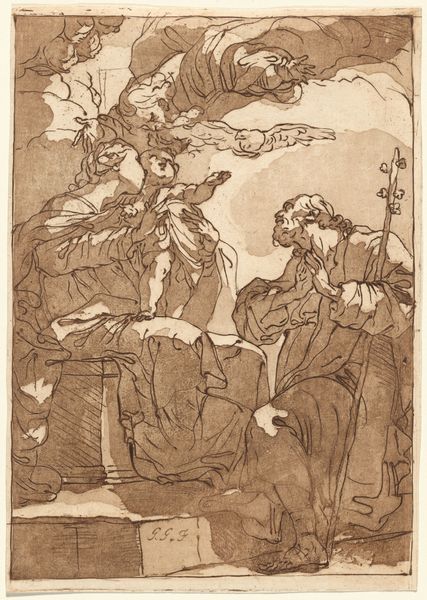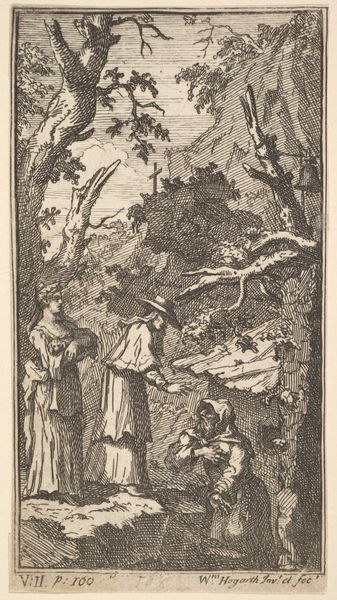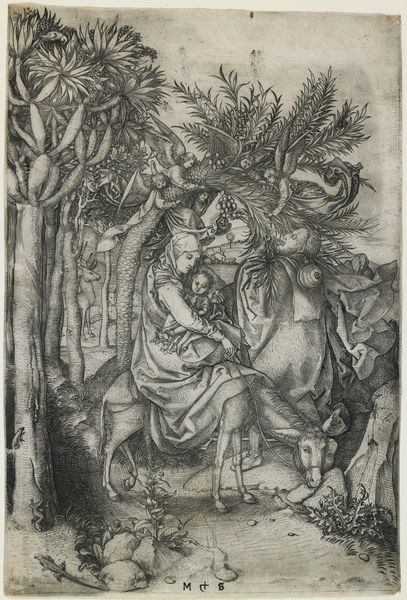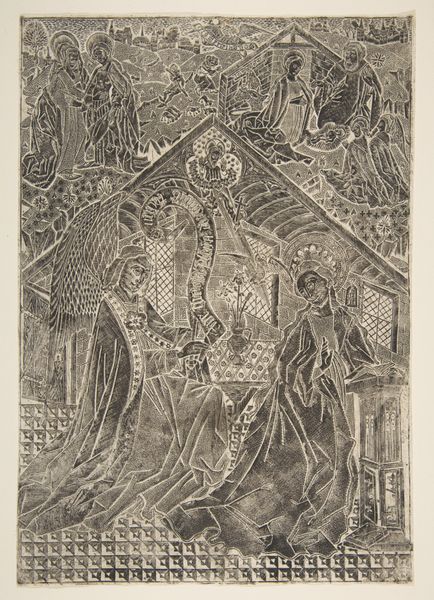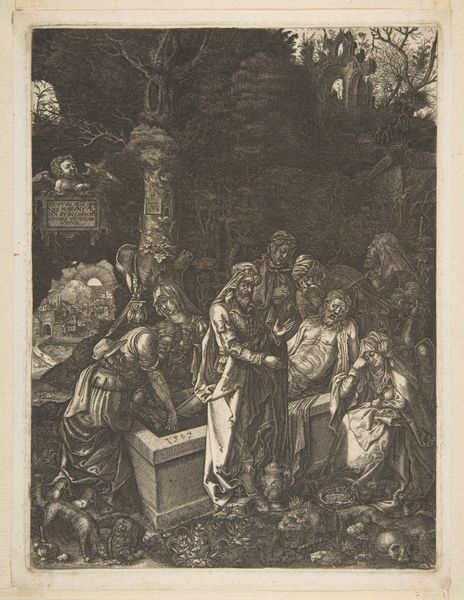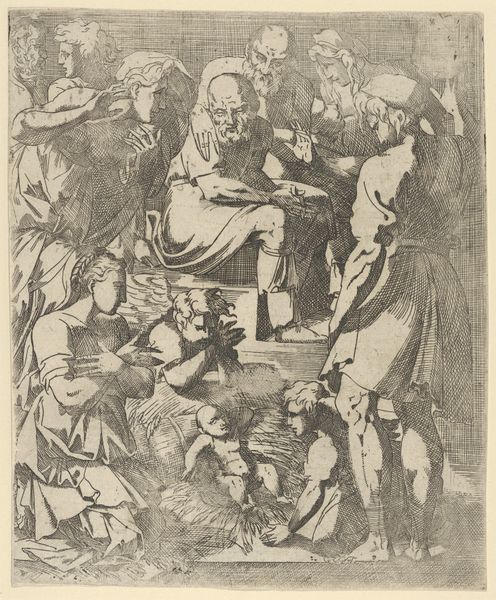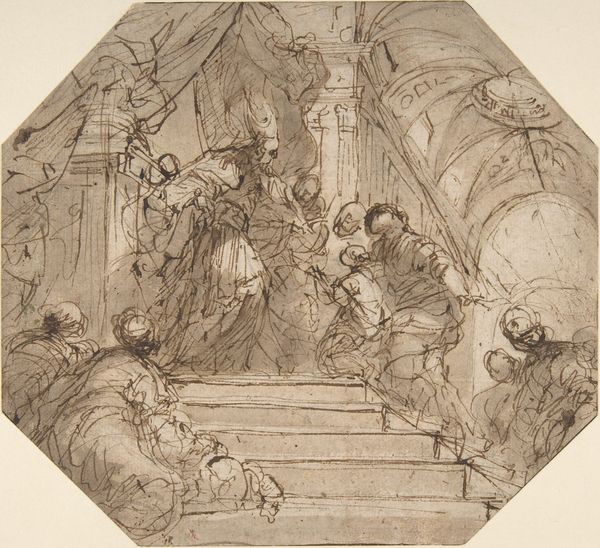
Conrad Celtis Presenting His Book "Quatuor Libri Amorum" to Maximilian I ( from the book) 1502
0:00
0:00
drawing, print, woodcut
#
portrait
#
drawing
#
pen drawing
# print
#
book
#
figuration
#
form
#
woodcut
#
line
#
history-painting
#
northern-renaissance
Dimensions: sheet: 9 3/16 x 6 1/4 in. (23.3 x 15.9 cm) image: 8 7/16 x 5 3/4 in. (21.4 x 14.6 cm)
Copyright: Public Domain
Albrecht Dürer created this woodcut to illustrate Conrad Celtis's book around the turn of the 16th century. We see Celtis presenting his work to Emperor Maximilian I. Note the elaborate use of symbols: the imperial eagle above Maximilian signifies his power and authority, while the vine motifs evoke classical themes of poetry and celebration, reminiscent of Bacchus, the god of wine and theater. Consider the evolution of the eagle as a symbol. From the Roman Empire to its adoption by various European dynasties, the eagle embodies dominion. Its recurrence speaks to a deep-seated human need for emblems of power. Even today, national flags and logos feature the eagle. Observe the posture of presentation, echoing ancient Roman gestures of offering and respect. It speaks to the enduring human need for recognition. These gestures and symbols carry collective memories, subtly engaging our subconscious and reminding us of the cyclical nature of history and the enduring power of symbols.
Comments
No comments
Be the first to comment and join the conversation on the ultimate creative platform.
